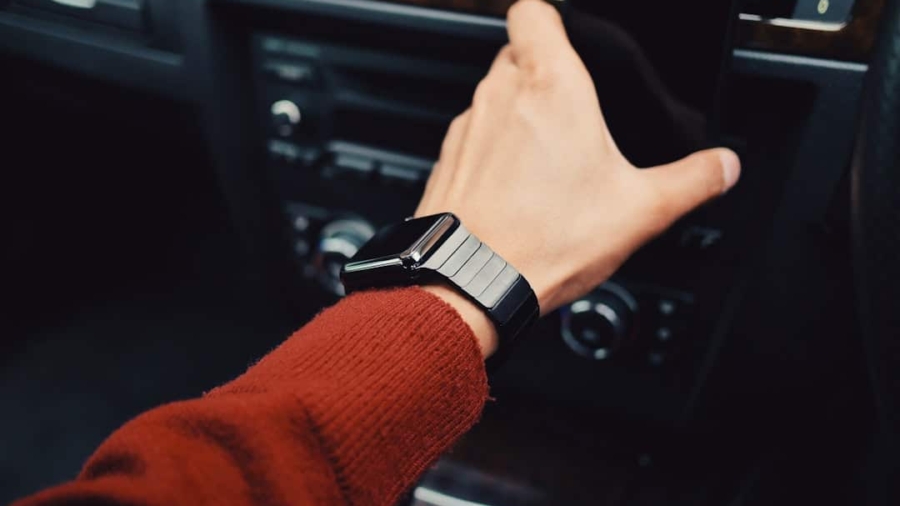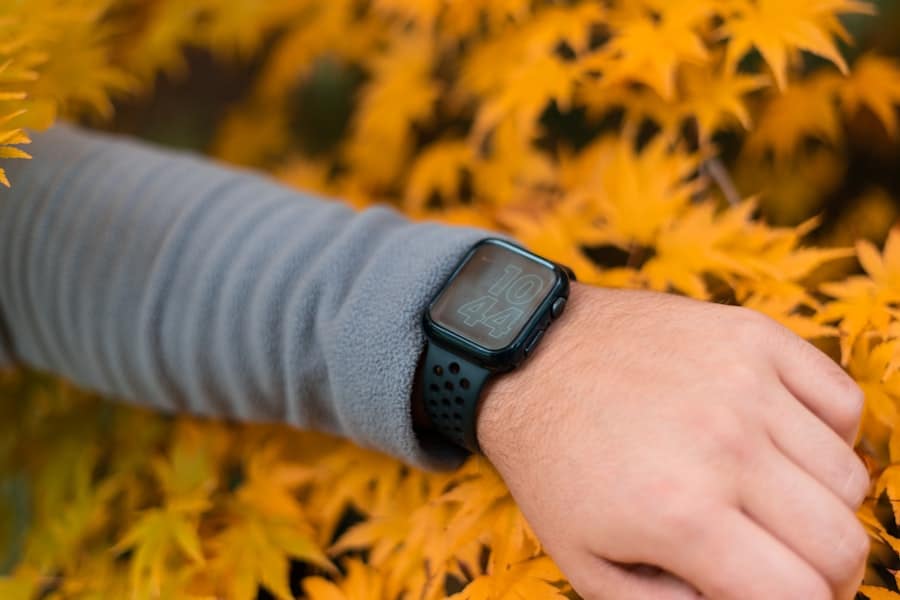Non-invasive blood monitoring represents a significant leap forward in the realm of medical diagnostics and patient care. Traditionally, blood analysis has relied on invasive methods, such as venipuncture, which can be uncomfortable and carry risks of infection or complications.
This approach not only enhances patient comfort but also encourages more frequent monitoring, which can lead to better health outcomes. The ability to continuously track vital parameters such as glucose levels, blood oxygen saturation, and other biomarkers opens new avenues for managing chronic conditions and improving overall health. The development of non-invasive blood monitoring technologies has been fueled by advancements in various fields, including optics, biosensors, and data analytics.
These innovations have paved the way for wearable devices that can seamlessly integrate into daily life, providing real-time health data to users. As the demand for personalized healthcare solutions grows, non-invasive blood monitoring stands at the forefront of this transformation, promising to empower patients and healthcare providers alike with timely and actionable insights into health status.
Key Takeaways
- Non-invasive blood monitoring offers a convenient and painless alternative to traditional blood testing methods.
- Current wearable devices for non-invasive blood monitoring include smartwatches and fitness trackers with heart rate and oxygen saturation sensors.
- Advancements in technology, such as miniaturized sensors and advanced algorithms, are improving the accuracy and reliability of non-invasive blood monitoring devices.
- Challenges and limitations of wearable devices in non-invasive blood monitoring include accuracy issues, limited biomarker detection, and data privacy concerns.
- Potential applications and benefits of non-invasive blood monitoring include continuous health monitoring, early disease detection, and personalized healthcare.
Current State of Wearable Devices in Non-Invasive Blood Monitoring
The current landscape of wearable devices for non-invasive blood monitoring is diverse and rapidly evolving.
For instance, the Apple Watch Series 6 introduced a pulse oximeter feature that allows users to measure their blood oxygen saturation levels directly from their wrist.
This capability not only enhances user engagement with their health but also provides valuable data that can be shared with healthcare professionals. Despite these advancements, the accuracy and reliability of non-invasive measurements remain a topic of ongoing research and development. While some devices have shown promising results in clinical settings, others may struggle with precision under certain conditions or demographic groups.
For example, skin tone, temperature, and even movement can affect the readings obtained from optical sensors. As a result, manufacturers are continually refining their algorithms and sensor technologies to improve performance across diverse populations and scenarios.
Advancements in Technology for Non-Invasive Blood Monitoring
Recent technological advancements have significantly enhanced the capabilities of non-invasive blood monitoring devices. One notable area of progress is in the development of advanced optical sensors that utilize techniques such as near-infrared spectroscopy (NIRS) and photoplethysmography (PPG). These methods allow for the detection of blood constituents by analyzing how light interacts with the skin and underlying tissues.
For example, NIRS can provide insights into hemoglobin levels and tissue oxygenation, which are critical for assessing cardiovascular health. Moreover, the integration of artificial intelligence (AI) and machine learning algorithms into these devices has revolutionized data interpretation. By analyzing vast amounts of data collected from users, AI can identify patterns and anomalies that may indicate health issues.
This capability not only enhances the accuracy of readings but also enables predictive analytics, allowing users to receive alerts about potential health risks before they become critical. Companies like Fitbit and Garmin are already exploring these technologies to provide users with more personalized health insights based on their unique physiological data.
Challenges and Limitations of Wearable Devices in Non-Invasive Blood Monitoring
Despite the promising advancements in non-invasive blood monitoring technologies, several challenges and limitations persist. One significant hurdle is the variability in individual physiology that can affect sensor performance. Factors such as skin thickness, hydration levels, and even ambient temperature can influence the accuracy of readings obtained from wearable devices.
For instance, a study published in the journal “Sensors” highlighted that variations in skin perfusion could lead to discrepancies in pulse oximetry readings among different individuals. Additionally, there are concerns regarding data privacy and security associated with wearable devices. As these devices collect sensitive health information, ensuring that this data is protected from unauthorized access is paramount.
Users must trust that their personal health data will not be misused or compromised. Furthermore, regulatory bodies are still grappling with how to classify and oversee these devices effectively. The lack of standardized protocols for validation and approval can lead to inconsistencies in device performance and user experience.
Potential Applications and Benefits of Non-Invasive Blood Monitoring
The potential applications of non-invasive blood monitoring are vast and varied, spanning multiple domains within healthcare. One of the most significant benefits is its ability to facilitate chronic disease management. For individuals with diabetes, continuous glucose monitoring through non-invasive means could revolutionize how they manage their condition.
Instead of relying on fingerstick tests multiple times a day, patients could receive real-time glucose readings through a wearable device, allowing for more informed dietary choices and insulin management. Beyond chronic disease management, non-invasive blood monitoring can play a crucial role in preventive healthcare. By enabling regular monitoring of vital signs and biomarkers, individuals can gain insights into their health trends over time.
This proactive approach can lead to early detection of potential health issues, such as cardiovascular diseases or metabolic disorders, allowing for timely interventions that could prevent more severe complications down the line. Moreover, the convenience of non-invasive monitoring encourages greater adherence to health management plans among patients.
Regulatory and Ethical Considerations for Non-Invasive Blood Monitoring Devices
As non-invasive blood monitoring devices become more prevalent in healthcare settings, regulatory and ethical considerations must be addressed to ensure patient safety and efficacy. Regulatory bodies like the U.S. Food and Drug Administration (FDA) are tasked with evaluating these devices to ensure they meet safety standards before they reach consumers.
However, the rapid pace of technological innovation often outstrips existing regulatory frameworks, leading to challenges in classification and oversight. Ethically, there are concerns regarding informed consent and data ownership. Patients must be adequately informed about how their data will be used and who will have access to it.
Transparency in data handling practices is essential to build trust between users and manufacturers. Additionally, there is a need for guidelines on how to handle potential biases in data collection and interpretation, particularly when it comes to diverse populations that may not be adequately represented in clinical trials.
Future Trends and Innovations in Wearable Devices for Non-Invasive Blood Monitoring
Looking ahead, several trends are poised to shape the future of wearable devices for non-invasive blood monitoring. One emerging trend is the integration of multi-modal sensing technologies that combine various measurement techniques into a single device. For instance, future wearables may incorporate both optical sensors for blood analysis and electrocardiogram (ECG) capabilities for comprehensive cardiovascular monitoring.
This holistic approach could provide users with a more complete picture of their health status. Another promising direction is the incorporation of telehealth features into wearable devices. As remote healthcare becomes increasingly important, wearables equipped with communication capabilities could facilitate real-time consultations between patients and healthcare providers.
This integration would allow for immediate feedback on health data collected by the device, enabling timely interventions when necessary. Furthermore, advancements in battery technology may lead to longer-lasting devices that require less frequent charging, enhancing user convenience.
The Impact of Non-Invasive Blood Monitoring on Healthcare
The impact of non-invasive blood monitoring on healthcare is profound and multifaceted. By providing patients with accessible tools for tracking their health metrics without invasive procedures, these technologies empower individuals to take charge of their well-being actively. The shift towards continuous monitoring fosters a culture of proactive health management rather than reactive treatment.
As technology continues to advance, the potential for non-invasive blood monitoring devices to transform healthcare delivery becomes increasingly apparent. From improving chronic disease management to enhancing preventive care strategies, these innovations hold promise for better patient outcomes and more efficient healthcare systems overall. The journey toward widespread adoption will require collaboration among technologists, healthcare providers, regulators, and patients to navigate the challenges ahead while maximizing the benefits of this revolutionary approach to health monitoring.
In a recent article discussing the future of wearable devices in non-invasive blood monitoring, Enicomp also explores the possibilities with the Samsung Galaxy S22 in another insightful piece. To learn more about the latest advancements in technology and how they are shaping the future of healthcare, check out this article.
FAQs
What are wearable devices for non-invasive blood monitoring?
Wearable devices for non-invasive blood monitoring are small, portable devices that can measure various blood parameters without the need for traditional blood sampling methods such as needles or lancets. These devices use technologies such as optical sensors, spectroscopy, and impedance to measure blood glucose, oxygen levels, and other biomarkers through the skin.
How do wearable devices for non-invasive blood monitoring work?
These devices work by using different technologies to analyze the composition of the blood through the skin. For example, some devices use optical sensors to measure changes in light absorption or reflection, while others use spectroscopy to analyze the interaction between light and the skin. Some devices also use impedance to measure the electrical properties of the skin and underlying tissue.
What are the advantages of wearable devices for non-invasive blood monitoring?
The advantages of wearable devices for non-invasive blood monitoring include the ability to continuously monitor blood parameters without the need for frequent blood sampling, reduced pain and discomfort for the user, and the potential for real-time data analysis and feedback. These devices also offer greater convenience and mobility for the user compared to traditional blood sampling methods.
What are the potential applications of wearable devices for non-invasive blood monitoring?
Wearable devices for non-invasive blood monitoring have the potential to be used in various healthcare settings, including for monitoring glucose levels in diabetic patients, tracking oxygen levels in patients with respiratory conditions, and monitoring other biomarkers for early detection of health issues. These devices also have potential applications in sports and fitness monitoring, as well as in research and clinical trials.
What are the challenges and limitations of wearable devices for non-invasive blood monitoring?
Challenges and limitations of wearable devices for non-invasive blood monitoring include the need for accurate and reliable measurement technologies, potential interference from external factors such as motion and ambient light, and the need for validation and regulatory approval. Additionally, the development of these devices may require addressing issues related to data privacy and security, as well as user acceptance and adherence.



